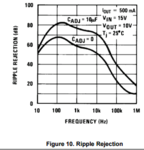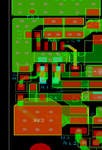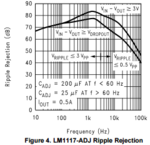tiwari.sachin
Full Member level 6
I am using a DC to DC buck to convert 24V to 5V
Followed by that a LM1117 to convert 5V to 3.3V
Although I am getting the required 5V and 3.3V but I see a lot of noise (ripples) at the output.
I am using 47uF Ceremic caps at 5V
and 10uF Ceramic caps with series 1R resistor at output of 3.3V
I did try to have more parallel caps but its not effecting much.
Any suggestions for how I can possibly reduce these ripples
- - - Updated - - -
The DC to DC operates at Fixed 570 kHz Switching Frequency
Followed by that a LM1117 to convert 5V to 3.3V
Although I am getting the required 5V and 3.3V but I see a lot of noise (ripples) at the output.
I am using 47uF Ceremic caps at 5V
and 10uF Ceramic caps with series 1R resistor at output of 3.3V
I did try to have more parallel caps but its not effecting much.
Any suggestions for how I can possibly reduce these ripples
- - - Updated - - -
The DC to DC operates at Fixed 570 kHz Switching Frequency










